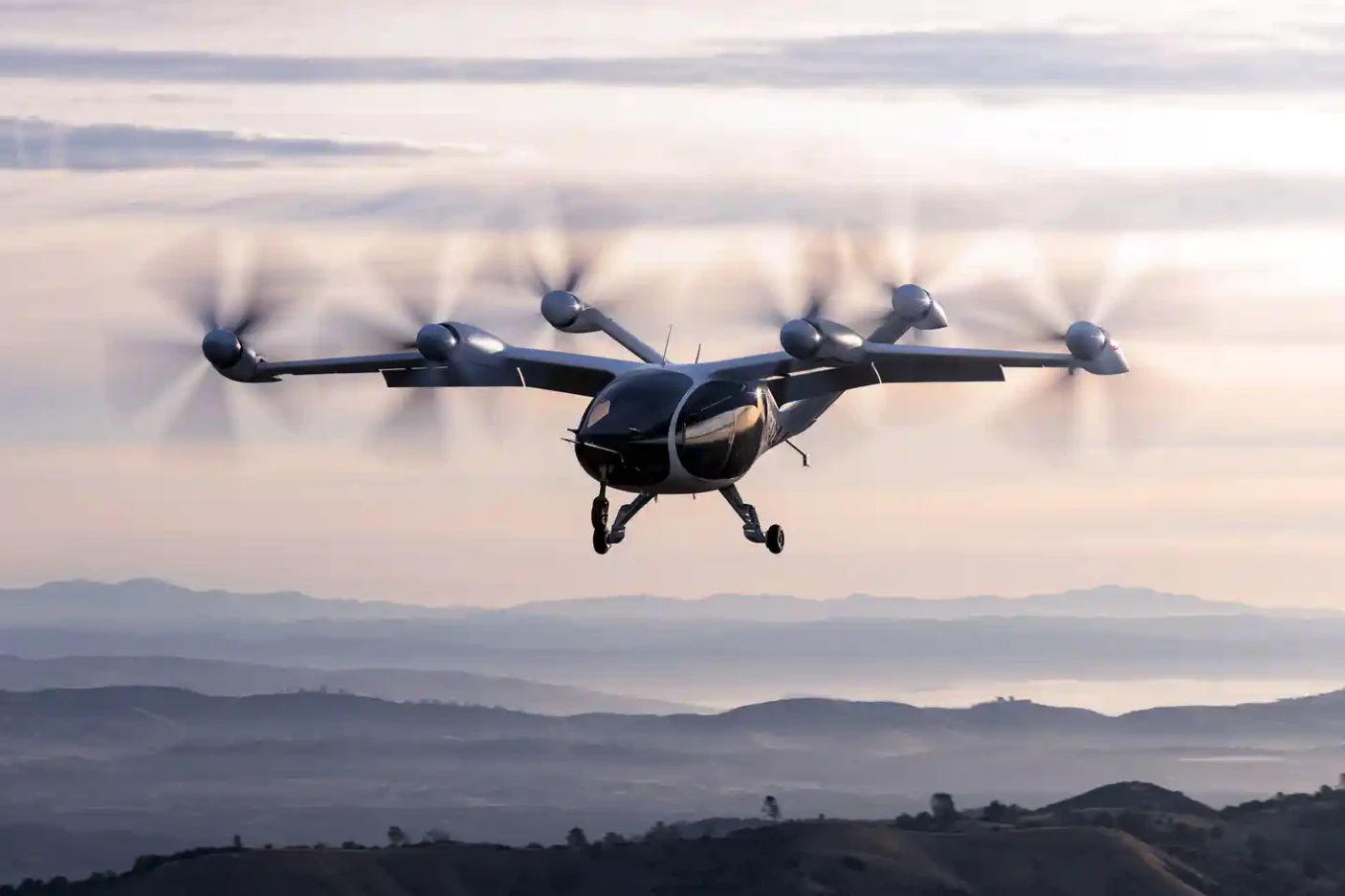Joby Aviation has been in semi-stealth mode for so long that this pair of videos released today comes as a real shock. Here's our first proper look at the world's most advanced eVTOL air taxi taking off, transitioning to horizontal flight, cruising and landing.
Joby released the videos as part of an investor push as it gears up to go public on the New York Stock Exchange with a Special Purpose Acquisition Company (SPAC) called Reinvent Technology Partners.
The Californian company has been working on its aircraft far longer than most, and its five-seat, 200-mph (322-km/h) electric VTOL aircraft has already proven itself in more than 1,000 test flights. Offering a range up to 150 miles (240 km) using existing battery technology, the Joby aircraft uses six large tilting rotors to achieve vertical lift and horizontal winged cruise. It's one of the most complete and well thought-out aircraft in the space.
The company has enormous manufacturing resources behind it thanks to a mega-deal with Toyota. It also owns Uber Elevate, and thus has the potential to put together a beautifully integrated multi-mode travel service with millions of users already signed up.
It's the best funded company in the eVTOL space, with the closest thing to a finished aircraft, it's agreed on certification terms with the FAA and has a substantial leg up when it comes time to launch a service. If cheap, quiet eVTOL urban air taxis are going to be a thing, Joby seems well positioned to lead the market early.
In the first video, Joby founder JoeBen Bevirt talks through the company's plans in a brief and animated fashion with the aircraft behind him, and towards the end we get an excellent sense of just how different these things will be from helicopters as it takes off vertically and hovers several feet off the ground so quietly that Bevirt doesn't appear to have to raise his voice.
We can't see a lapel mic on him, so even if there's an off-camera boom mic recording sound a couple of feet over his head, that's an incredibly quiet takeoff. And VTOL operations will be the loudest phase of flight for these machines; once they're cruising, they'll be substantially quieter than a regular airplane thanks to their electric powertrains.
The vastly reduced noise factor is one reason why people believe these things will be so much more useful than helicopters in an urban setting. The other is cost; the simplicity of electric powertrains, vastly reduced maintenance and low cost of electricity, as well as increased volume of operations due to their unobtrusive noise signature, combine to bring dollar-per-mile projections down close to what a ground-based ride share costs; at least, over a certain distance.
Simple flight controls will bring pilot training costs down, too, and all these machines are designed to eventually be run autonomously, with remote control from flight control centers on the ground as a backup when needed. The potential for affordable, mass-market 3D commuting has market analysts talking about trillion-dollar opportunities in the sector.
A second video shows the tilt-rotor system in operation, covering takeoff, transition, cruise and landing flight phases. We'd prefer to ditch the music and get a better sense of the sound of the thing, but such is life.
It's coming close to time for the rubber to hit the road in the eVTOL segment, if you'll excuse an extremely poor analogy. Money is coming in from all over the place, countless companies are jockeying to put together aircraft designs, get them prototyped, and get stuck into the difficult process of certifying them for commercial use, and the wheat is beginning to sort itself from the chaff. Watch this space.
Source: Joby Aviation





